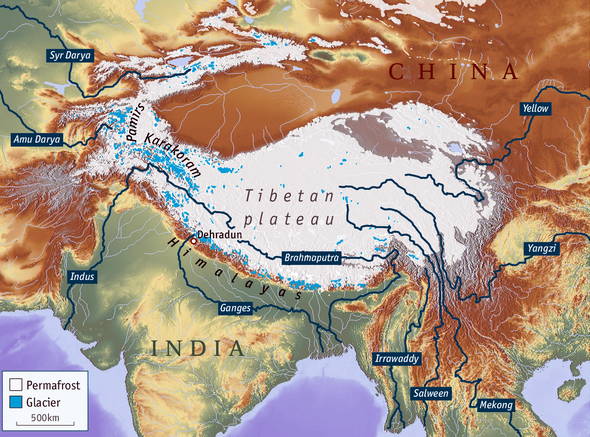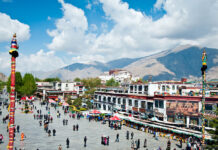
(TibetanReview.net, Oct28, 2018) – The average temperature in the northeastern part of the Tibetan Plateau has been rising at a rate well over three times the average speed of global warming since 1961, reported China’s official Xinhua news agency Oct 27, citing latest statistics from the climate centre of Qinghai Province. What is more, thawing permafrost, which would free trapped carbon, is seen to lead to further increase in the rising temperature.
The average temperature of the plateau has climbed 0.43 degrees Celsius per decade, higher than the average speed of global warming, which is 0.12 degrees Celsius per decade, the report cited the centre as saying.
The centre has also cited statistics as revealing that the temperature in this part of the Tibetan Plateau has been significantly rising, especially since 1987. Besides, it was also stated to have become wetter between 1961 and 2017, with the average annual precipitation rate increasing 8.0 mm per decade.
Overall, the whole of the Tibetan Plateau, which spans 1,000km north to south and 2,500km east to west, was stated to have also been becoming warmer and wetter due to global climate change.
Influenced by this trend, the ecological environment of the Qinghai section of the Tibetan Plateau was becoming better despite shrinking glaciers and frozen earth, a local meteorologist was cited as saying.
This section of the Tibetan Plateau is home to the headwaters of the Yangtze, Yellow and Lancang rivers, and viewed as China’s major water conservation area and ecological protection area.
A Channelnewsasia.com report Oct 27cited a United Nations report earlier this month as saying society would have to enact “unprecedented” changes to how it consumes energy, travels and builds. Otherwise, at the present rate of warming, the increase in the world’s temperatures would likely reach 1.5 degrees Celsius between 2030 and 2052 after an increase of 1 degree Celsius above pre-industrial levels since the mid-1800s.
The report also said state media had cited scientists as saying last month that glaciers on the entire Tibetan Plateau and neighbouring regions had shrunk 15 per cent in the past half a century.
The resultant melting glaciers had expanded lakes and increased water flows in rivers originating from the area. Provincial monitoring data published in 2017 were reported to show that the Qinghai Lake, the PRC’s largest, had expanded to 4,400 sq km, its biggest surface area in almost two decades.
In the case of the Tibetan Plateau, the urgency of the need to address the issue was stated to stem from the fact that thawing permafrost on it, which accounts for up to a quarter of the PRC’s land carbon sinks, could release earlier trapped carbon and further hasten the warming in temperatures.





